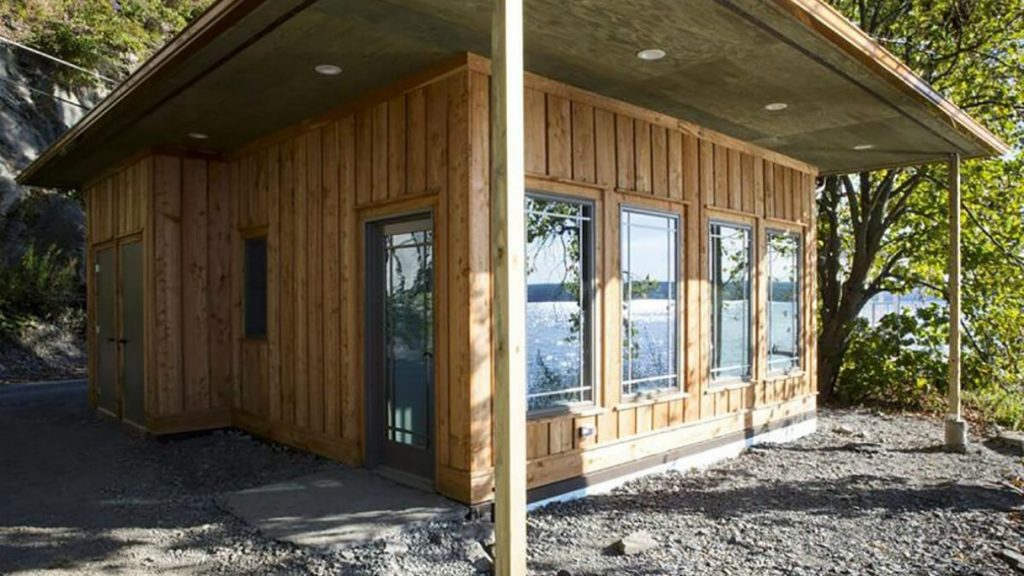
photo by Dr. Bill Thomas The first "Minka" home, built in New York
By Samantha Horton | Next Avenue
Part of the TRANSFORMING LIFE AS WE AGE SPECIAL REPORT
(This article appeared previously on Side Effects Public Media.)
A tiny house and a big idea are coming to the University of Southern Indiana (USI). The university announced it’s building a small, modular home to demonstrate how the tiny housing model could make independent living accessible for people of all ages and abilities.
The university plans to build the house on its Evansville campus. It’s part of a larger effort “aimed at creating a cultural transformation related to aging in community,” according to a university press release.
To make the $75,000 home, the university is partnering with Dr. Bill Thomas, a geriatrician, national expert on aging and one of Next Avenue’s Influencers in Aging. Thomas worked with an architect to create models for so-called “Minka” homes — compact, inexpensive houses with interchangeable parts that are designed to be user-friendly for older adults or those living with disabilities.
“[The Minka] is an example of architecture and technology that can help you be independent for longer. That enhanced independence is an important way of addressing ageism,” Thomas said.
Advantages of Tiny Houses for Older Adults
The home’s small size is a selling point for older people who might not be able to maintain their larger home as they age. “For older people, sustaining a big unwieldy house can be the thing that tips the scale from independence to dependence,” a blog post on Thomas’ website says.
The USI demonstration will showcase how the Minka model “can be adapted to meet the needs of different ages and abilities,” said the university’s press release.
USI College of Nursing and Health Professions Dean Ann White said that although no one will permanently live in the new house, the model will allow people of all ages to learn from each other and contribute to a functional model in the future.
The model home is one part of a first-year pilot exploring models that bring older and younger people together. The project aims to transform aging stereotypes, said White.
“We are very interested in having students involved because I think they have a lot of preconceived notions about elders and about those individuals that are aging,” she added.
All Ages Living Together
Ultimately, Thomas said he’d like to see a pod-like village of Minkas spring up that has older people living within the community, not sequestered away in nursing homes.
People have been living in multi-generational groups throughout history, but Thomas says that after doing a deep dive, he has been unable to find any university in the United States that has made the simple leap saying that people of different ages need to be together.
The project will construct Thomas’ second Minka house — his daughter, who is disabled, lives in the first one in New York.
The pilot project is funded by the university, the USI Foundation, AARP and AARP Indiana.
This story was produced by Side Effects Public Media, a reporting collaborative focused on public health.
The project will construct Thomas’ second Minka house — his daughter, who is disabled, lives in the first one in New York.
The pilot project is funded by the university, the USI Foundation, AARP and AARP Indiana.
This story was produced by Side Effects Public Media, a reporting collaborative focused on public health.
![]() This article originally appeared on Next Avenue
This article originally appeared on Next Avenue
© Twin Cities Public Television - 2018. All rights reserved.
Read Next



